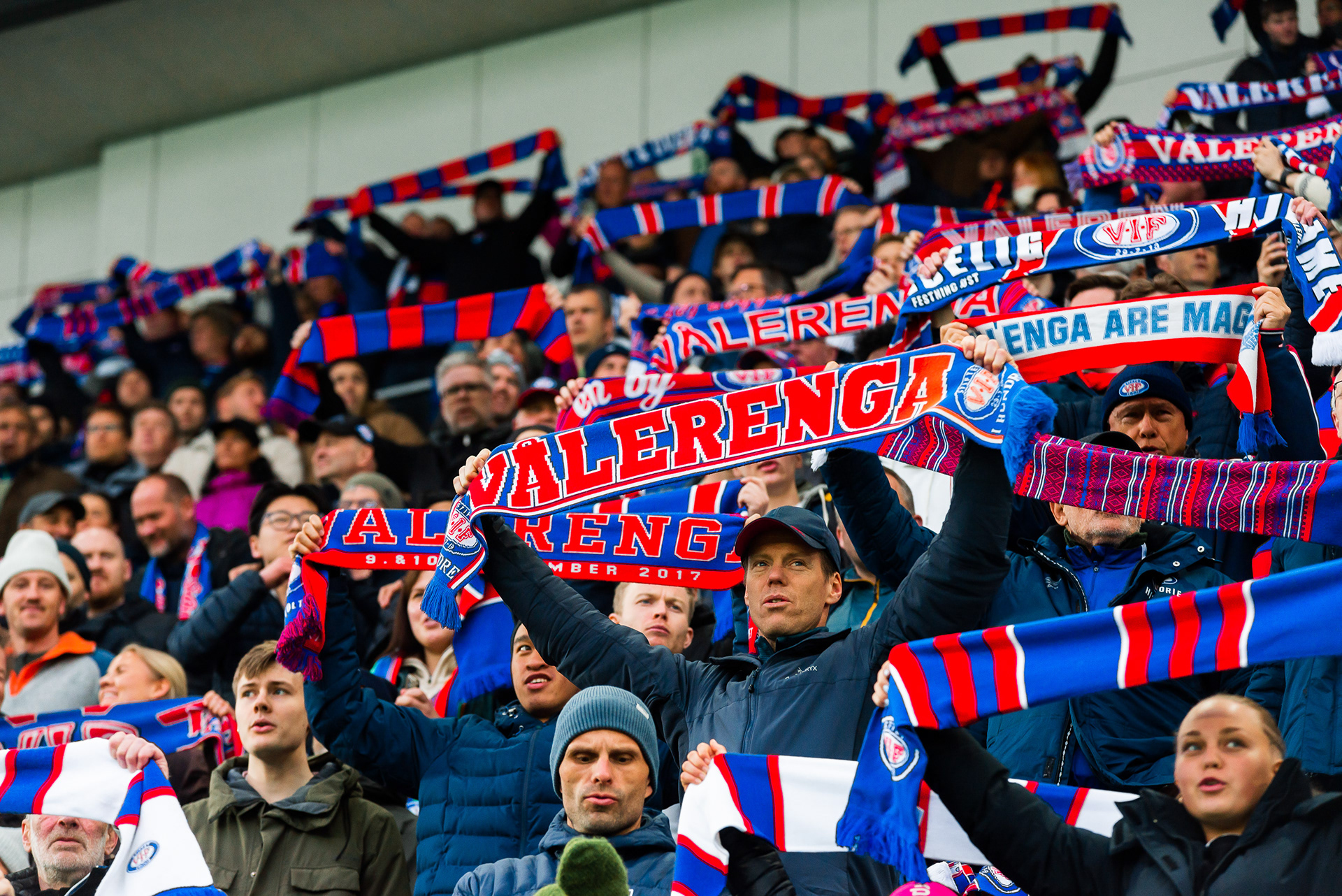Vålerenga fans passionately celebrating a derby day goal against Lillestrøm as they raced into a 3-1 lead, later going a man down and ultimately succumbing to a 4-3 loss.
90 minutes in the Nordics
In a region of the world where interest is high for a multitude of sports - football still holds a special place in the heads of the Nordics. The fans are passionate and there is a lot of tradition in the clubs.
Unlike in the UK though, there is a new breed of new challenger clubs that are being revitalised who are upsetting the powerhouses of the top leagues. This is turning the league tables upside down and becoming a proving ground for trying new methods of nurturing and developing young talent.
With thanks to Vålerenga IF (Oslo, Norway) and FC Nordsjælland (Farum, Denmark) - I have covered a number of fixtures in the last year to experience a new side of Nordic football!
Ultra positivity
Despite top teams having smaller fan bases in both the Danish Superliga and Norwegian Eliteserien, it doesn’t stop the fans being vocal, passionate and well organised. Football in Norway is huge, so is the country though, making travel to away fixtures (or even home fixtures) less simple.
Unlike in the UK but more like continental Europe, such as Germany and Italy, most of the top teams have their ultras fan groups. They are the constant source of fan action, chants, tifos and pyrotechnics. It makes fixtures between teams quite a surprising spectacle in spite of modest turnouts and especially in derby fixtures the stadium turns into a cauldron of noise and colour.
I was surprised by the use of pyrotechnics by a lot of different fan groups, given that they are very much banned from the UK. There will definitely be observers who believe that they pose a safety risk, and while that may be correct, there seems to be an unspoken conduct resulting in responsible usage and disposal of pyros. I would be lying if I didn’t say that it adds an extra dimension of the experience.




The tigers roar
The strategies of teams competing in this region is also very interesting to see. I asked a friend about Bodø/Glimt, recent winners of the Eliteserien 2022 and currently leading the 2023 season. Bodø, a town of some 50,000 people in just below the arctic circle and is by no means a rich club. Yet recently they brought in new management who turned the club upside down and have turned them into a strong competitor not just domestically but also putting in strong performances, including a 6-1 victory against Jose Mourinho’s Roma before ultimately being knocked out by Mikel Arteta’s Arsenal last year in the Europa League.
Then looking south towards Denmark and FC Nordsjælland you have a team from a small town half an hour north of Copenhagen. The stadium is nestled amongst light forestation and a small urban area where a light following can be seen vocally supporting The Tigers. The fanbase is noticeably quite young and whilst enjoying their first title back in 2012 before competing against Chelsea in the Champions League group stages the year after.
The curious part of FCN is their new strategy, establishing youth setups in Ghana and Egypt under the name Right To Dream, which is also the name of their stadium. Recently the team has featured a majority of youth players around the 20-year old mark, many arriving from the youth setup and experiencing a decent level of success. Schjelderup, the Norwegian striker beginning last season, was notably sold to Benfica last year. Topping the table for a long spell last season, a fatal 5-1 loss to Brøndby and wasted chances in games ultimately saw them cede their chance of adding a second Superliga star above their badge to FC København in the last few games.




Challenging the old guard
While it has occurred in Europe’s big leagues that famed sides of yesteryear have struggled - Blackburn Rovers, Nottingham Forest; Deportivo La Coruna; Hamburger SV and Napoli to name but a few. Excluding the financially wounded teams such as Juventus, Parma and Leeds United - who experienced more violent downturns.
Interestingly, seeing the Eliteserien this year and Superliga last season through up some interesting shifts with established clubs such as Rosenborg, Vålerenga, Brøndby and Midtjylland flirting with relegation. Clubs with new strategies such as Nordsjælland, Viborg, Bodø-Glimt and Tromsø have found new life to challenge at the upper end.
Clubs finding and nurturing talent often find them leaving quickly for decent profits levelling up to the Portuguese, Belgian or Dutch leagues. It could be interesting to a flow map for most regular transfers. The Norwegian league also needs to contend with their season beginning in Spring and ending in November, which can see promising talent moving to clubs during their mid-season.
















